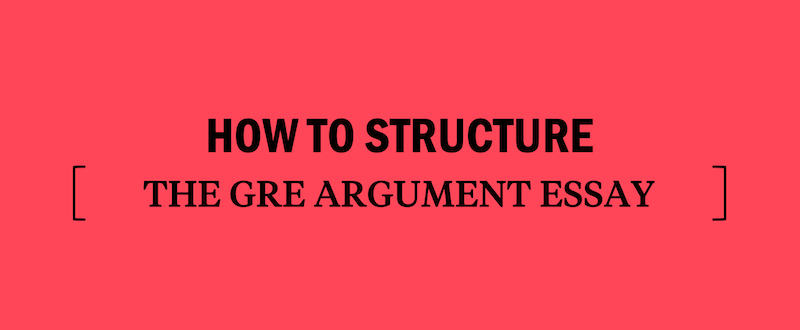GRE Argument Writing
For most test-takers, the Argument Task is a lot less frightening than the Issue Task. For one thing, it is a shorter task at 30 minutes, which means fewer words are expected. More importantly, though, the Argument Task relies less on outside evidence; your ability to recall an apt historical example or hypothetical situation–a rare and treasured skill for the Issue Task–is no longer necessary. All of your essay content is drawn straight from the prompt.
Your task is to critique the given argument in terms of logical soundness and strength of evidence. The given argument generally consists of a persuasive paragraph on some real-world issue. Don’t worry; you won’t be asked to pick apart the great rhetoricians; all of the argument paragraphs are carefully chosen for their logical flaws. You’ll see arguments like “Americans should eat soy to prevent depression,” “The Mozart School of Music is the best of its kind because of x, y, and z,” and “Grove College should preserve all-female education to improve morale among students and convince alumni to continue their support.” Each argument will have its reasons, which may or may not appear logical on the surface; it is your task to find the flaws in their reasoning and present it clearly and persuasively.
The GRE software will give you a few specific guidelines for critiquing the argument before you begin. These should not be ignored:
- You are not being asked to agree or disagree with any of the statements in the argument
- You should analyze the argument’s line of reasoning
- You should consider questionable assumptions underlying the argument
- You should consider the extent to which the evidence presented supports the argument’s conclusion
- You may discuss what additional evidence would help strengthen or refute the argument
- You may discuss what additional information, if any, would help you to evaluate the argument’s conclusion.
The above suggestions are extremely valuable to help guide your thinking. According to the guidelines, we should examine “assumptions” and the effectiveness or suitability of “evidence;” further, we should hypothesize what additional evidence could be used to strengthen or refute the argument. These three suggestions comprise a pretty reliable outline of the essay.
Another important suggestion in the guidelines is that the Argument Task is not like the Issue Task for one key reason: you will not be asked to contribute your own opinion. If you encounter an argument advocating the consumption of soy to prevent depression, do not begin your essay by agreeing or disagreeing and providing evidence for your stance. Almost all the material for your writing is contained within the given argument.
Argument Flaws
Because nearly all of your writing material comes from the given argument, you can imagine these arguments are not impenetrably persuasive. All arguments will contain multiple flaws and logical fallacies; some of those fallacies will come straight from that Intro to Logic class you might have taken in college (e.g. post hoc, fallacy of accident, etc). Lucky for us, we won’t have to recall the fancy names of these fallacies–just being able to recognize them is good enough. Here’s a quick overview of some of these flaws in plain English:
- Assuming that characteristics of a group apply to each member of that group
- Assuming that a certain condition is necessary for a certain outcome
- Drawing a weak analogy between two things
- Confusing a cause-effect relationship with a correlation (famously known as post hoc ergo propter hoc, i.e. correlation does not imply causation)
- Relying on inappropriate or potentially unrepresentative statistics
- Relying on biased or tainted data (methods for collecting data must be unbiased and the poll responses must be credible)
Most of the arguments contain three or four of these flaws, making your body paragraph organization pretty simple. Becoming familiar with these flaws and how to spot them is the first step to writing a quality Argument Task. Let’s look at these flaws in a little more depth:
Most of the arguments in the official argument question pool contain more than one of these flaws. Understanding and recognizing these flaws is the key to top-notch writing on the Argument Task. We’ll go in depth with these in the next installment.


